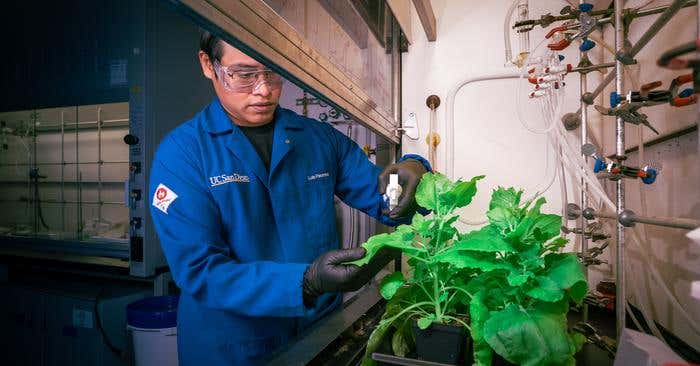Researchers develop genius new anti-fogging method to keep glasses, car windshields clear
The innovative films hold the potential for a wide range of applications, including anti-fogging and anti-reflective coatings for eyeglasses

[Dec. 1, 2023: JD Shavit, The Brighter Side of News]
These innovative films hold the potential for a wide range of applications, including anti-fogging and anti-reflective coatings for eyeglasses and vehicle windows. (CREDIT: Creative Commons)
In a groundbreaking development, researchers from Aalto University have devised a novel method to transform a common waste material derived from wood processing into transparent, bio-based films. These innovative films hold the potential for a wide range of applications, including anti-fogging and anti-reflective coatings for eyeglasses and vehicle windows.
Not only does this promising breakthrough provide a sustainable alternative to the use of toxic synthetic materials, but it also turns a waste product into a valuable carbon sink, contributing to environmental conservation efforts.
The remarkable study, recently published in the prestigious Chemical Engineering Journal, was conducted as part of FinnCERES, the flagship center for materials bioeconomy research supported by the Academy of Finland.
Lignin, an abundant byproduct in the paper and pulp industry, has long posed challenges due to its difficult processing nature, often leading to its incineration for heat production. While the concept of utilizing lignin nanoparticles for anti-fogging coatings is not entirely new, scientists have grappled with the significant obstacle of rendering these nanoparticles transparent. Dr. Alexander Henn, the lead author of the study and a dedicated doctoral researcher, sought to address this issue by pushing the boundaries of particle size reduction.
Related News
"Optical coatings need to be transparent, but so far, even rather thin lignin particle films have been visible. We knew that small particles appear less turbid, so I wanted to see if I could make invisible particle films by pushing the particle size to a minimum," explained Dr. Henn, outlining the central challenge the research team faced.
To overcome this obstacle, the researchers employed acetylated lignin and devised an improved esterification process that not only streamlined the reaction but also operated at a relatively low temperature of 60°C, a significant achievement in itself.
"The lignin particles I made from the acetylated lignin had rather surprising properties, which made the rest of this study very interesting. The possibility to make photonic films, for example, came as a total surprise," Dr. Henn expressed, underscoring the unexpected and promising avenues that their research had unveiled.
Films made of lignin nanoparticles can have structural coloration or be used as transparent anti-fog coatings. (CREDIT: Alexander Henn / Aalto University)
Furthermore, the novel approach's potential extends beyond anti-fogging and anti-reflective coatings. The team demonstrated the capability to produce colored films from lignin nanoparticles by meticulously controlling the coating's thickness and employing multi-layer films, resulting in materials with a diverse range of structural colors.
"Sahar Babaeipour's efforts were key to controlling the particles' photonic properties," noted Dr. Henn, acknowledging the indispensable contributions of his fellow researchers, Paula Nousiainen and Kristoffer Meinander, who brought their expertise in lignin chemistry and photonic phenomena to the table. Their collective efforts allowed the team to make sense of their results and harness them effectively.
Appearance, hydrophilicity, and antifogging properties of fully acetylated lignin nanoparticle films. Photos demonstrating temperature-induced condensation of water onto (a) uncoated and (e) coated glass. (CREDIT: Science Direct)
One of the most promising aspects of this innovative research lies in its feasibility for large-scale industrial production. The simplicity and high yield of the reaction suggest that it could be profitably scaled up to meet industrial demands, ushering in a new era of lignin-based products with manifold applications.
"Lignin-based products could be commercially valuable and simultaneously act as carbon sinks, helping relieve the current fossil fuel dependence and reduce carbon dioxide emissions," emphasized Professor Monika Österberg, underlining the pivotal role that this eco-friendly approach could play in addressing environmental challenges.
Graphical abstract showing how Lignin nanoparticles are useful in multiple applications, but their opaqueness remains an obstacle in optical applications. (CREDIT: Science Direct)
Dr. Henn emphasized the multidisciplinary nature of the study and its broader implications, extending beyond the confines of the laboratory. "Teamwork was an important part of making this study impactful. We were able to include the techno-economic analysis with the help of Professor Pekka Oinas and doctoral researcher Susanna Forssell," he emphasized, highlighting the comprehensive approach that enabled the research to translate into tangible benefits.
The transformation of lignin waste into transparent bio-based films holds immense promise in several key areas:
Eco-Friendly Alternatives: The development of transparent films from waste lignin offers an eco-friendly alternative to the use of synthetic materials laden with toxic chemicals. By reducing reliance on these harmful substances, the research contributes to a cleaner and safer environment.
Carbon Sink Potential: Perhaps one of the most significant contributions of this research is the potential to transform lignin-based products into carbon sinks. As the world grapples with escalating concerns over carbon emissions and climate change, the utilization of lignin waste to sequester carbon presents a sustainable and impactful solution.
Diverse Applications: The versatility of the lignin-based transparent films is another noteworthy aspect of this research. Beyond anti-fogging and anti-reflective coatings, the films can be employed to create colored materials with various structural colors, opening up a wide array of applications across industries.
Industrial Scalability: The ease and efficiency of the developed process suggest that it can be scaled up for industrial production. This not only paves the way for large-scale commercial applications but also underscores the economic viability of lignin-based products.
Interdisciplinary Collaboration: The success of this research exemplifies the significance of interdisciplinary collaboration. By harnessing the expertise of researchers from diverse fields, the study was able to address complex challenges and generate innovative solutions.
As industries continue to seek sustainable alternatives and environmentally responsible practices, the transformation of waste lignin into transparent bio-based films represents a pioneering step towards a greener and more sustainable future. This breakthrough not only offers practical solutions to common problems like fogging and reflection but also exemplifies the potential for scientific research to drive meaningful change at the intersection of industry and environmental conservation.
With lignin-based products poised to become both commercially viable and environmentally beneficial, it is evident that innovations like these hold the key to a more sustainable and prosperous future for us all.
Note: Materials provided above by The Brighter Side of News. Content may be edited for style and length.
Like these kind of feel good stories? Get the Brighter Side of News' newsletter.



